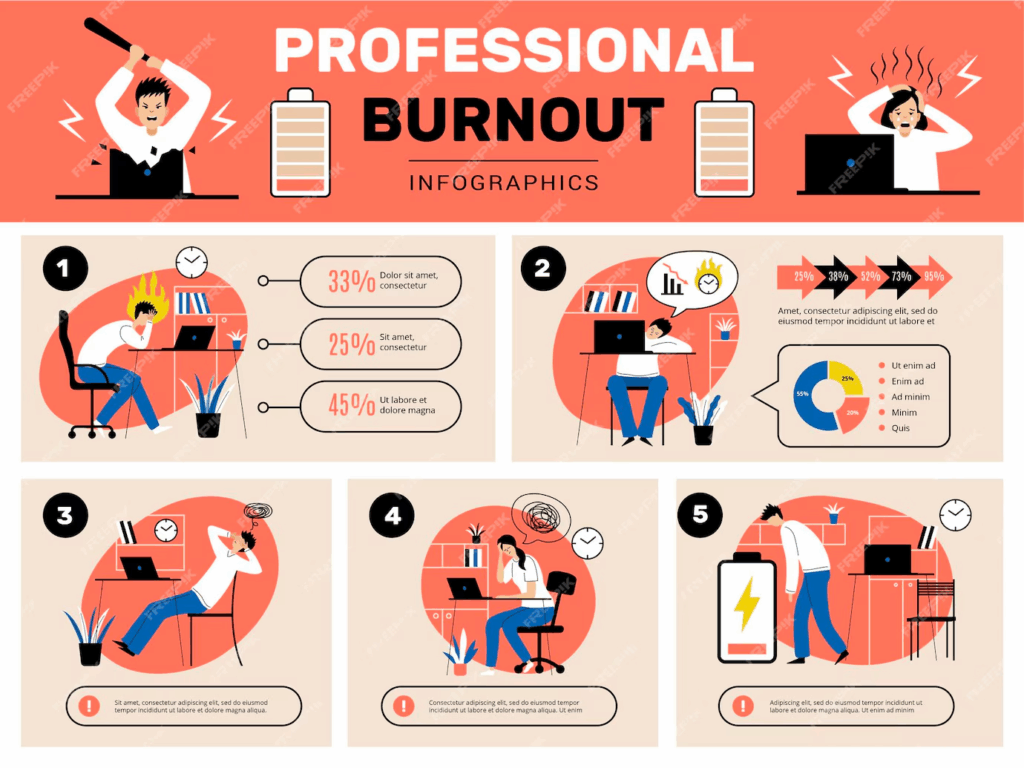Fear and intimidation in the workplace have serious consequences for both employees and organizations. The workplace should be a space where employees feel safe, motivated, and empowered to perform their best. However, when leaders resort to fear and intimidation, they compromise not only the well-being of their team but also the performance of the organization. Although fear-based leadership might yield short-term results, it has profound psychological consequences that reduce long-term productivity, trust, and innovation (Skogstad et al., 2015). This case study explores the psychological impact of such leadership, the biological mechanism behind stress responses, and how transformational leadership offers a healthier and more effective alternative.

Understanding Fear and Intimidation in the Workplace
Fear arises when individuals perceive a threat, while intimidation involves behaviors designed to provoke that fear to control others. In the workplace, this could take the form of public criticism, aggressive body language, threats of demotion, or micromanagement. While discipline and high standards are necessary, fear crosses the line into manipulation and emotional harm (Tepper, 2000).
It is vital to differentiate between authority and fear. True authority is earned through trust and consistency; fear may force compliance, but it weakens morale and employee initiative. Organizations that allow fear to fester often see high turnover, low engagement, and deteriorating team dynamics (Einarsen et al., 2020).
To explore more on leadership behavior and its consequences, visit Where There’s No Margin for Toxic Leadership
The Fight-or-Flight Response: Biology Behind Fear in the Workplace
When employees feel threatened, their bodies initiate the fight-or-flight response—a primal survival mechanism first described by Cannon (1932). This reaction floods the body with adrenaline and cortisol, preparing it to either confront the threat or escape. While effective for physical danger, this response is counterproductive in modern workplaces, where threats are psychological and persistent.
In work settings, constant exposure to intimidation keeps the body in a prolonged state of stress. According to McEwen (2007), chronic stress impairs memory, reduces problem-solving ability, and increases vulnerability to anxiety and depression. Employees may experience increased heart rates, insomnia, digestive issues, and emotional exhaustion.
Cognitively, the fight-or-flight response shifts the brain’s focus from creative thinking to immediate survival, reducing innovation and productivity (Arnsten, 2009). A constantly stressed employee is less likely to take initiative or contribute ideas, fearing ridicule or punishment.
Learn more about how stress affects the body from the American Psychological Association.

Psychological Effects of Fear and Intimidation on Employees
Employees in fear-based environments often report chronic anxiety, reduced confidence, and feelings of helplessness. These emotions not only affect personal well-being but also degrade workplace performance. Research by Maslach & Leiter (2016) confirms that burnout is significantly higher in toxic leadership environments, with symptoms such as emotional exhaustion, cynicism, and decreased efficacy.
The lack of psychological safety—the belief that one can speak up without fear of retribution—suppresses team collaboration, learning, and growth (Edmondson, 1999). Fear silences innovation. It creates environments where mistakes are hidden, feedback is avoided, and stress becomes the norm.
Read more about psychological safety in teams from Forbes.
Case Example: The Sales Team Under Fear-Based Leadership
Consider a regional sales team led by a manager named Dan. Dan publicly shames employees during team meetings, using sarcasm and raised voices to emphasize unmet sales quotas. Team members are expected to work late without extra pay, are regularly compared unfavorably to top performers, and face daily reminders that their jobs are at risk.
Initially, a few employees respond with a surge in effort, trying to avoid becoming Dan’s next target. But within weeks, the emotional toll begins to show. High performers begin to experience decision fatigue and chronic stress. One employee, Maria, who once led the team in quarterly results, now avoids asking questions or attending meetings unless absolutely necessary. Her enthusiasm has vanished.
Another employee, Jake, starts taking frequent sick days to avoid the toxic environment. Eventually, two of the most promising team members resign, citing mental health concerns and a lack of appreciation. Dan is bewildered by the drop in productivity and blames the team for being “soft.”
The HR department intervenes only after an anonymous whistleblower files a formal complaint. By then, the damage has already impacted quarterly revenue, and company reputation among job seekers suffers due to negative reviews on employment websites.
This example demonstrates how fear-driven leadership activates the fight-or-flight response and creates a downward spiral of morale, health, and business performance.

Transformational Leadership: A Healthy Alternative to Fear and Intimidation in the Workplace
To replace fear-based leadership, many organizations are turning to transformational leadership. This style emphasizes trust, vision, emotional intelligence, and employee development. Transformational leaders inspire rather than intimidate, cultivating environments where employees feel valued and motivated (Bass & Riggio, 2006).
Transformational leaders demonstrate:
- Idealized Influence: Acting as ethical role models.
- Inspirational Motivation: Communicating a compelling vision.
- Intellectual Stimulation: Encouraging new ideas and learning.
- Individualized Consideration: Supporting employees’ personal growth.
Such leaders promote psychological safety, which research shows is essential for innovation and collaboration (Edmondson, 1999). In contrast to fear-driven management, transformational leaders activate intrinsic motivation, build trust, and foster long-term loyalty and creativity (Kelloway et al., 2012).

Positive Case Example: A Culture
Now consider a contrasting case of a marketing team led by a transformational leader named Alicia. Alicia holds her team to high standards but fosters open dialogue and mutual respect. She meets regularly with team members one-on-one to learn about their personal and professional goals. When a project fails, she leads the team in identifying what can be improved rather than pointing fingers. Her focus is on learning, not punishment.
Employees feel empowered to take creative risks, knowing mistakes are opportunities for growth. Team member Raj, who struggled with presentations, receives coaching and encouragement. Within a year, he becomes one of the department’s best client communicators.
Team morale soars. Turnover drops. The marketing department begins outperforming other divisions, not through fear, but through alignment, vision, and psychological safety. Company-wide, other departments begin adopting Alicia’s practices, and leadership development programs are expanded to mirror her approach.
This example illustrates how transformational leadership doesn’t just benefit one team—it can ripple out to influence organizational culture and success.
For additional strategies, check out our article on how leaders fuel productivity.
Conclusion
Fear and intimidation in the workplace create toxic work environments by activating the fight-or-flight response, undermining employee well-being, and damaging organizational outcomes. In contrast, transformational leadership provides a path toward empowerment, resilience, and performance by fostering trust, motivation, and psychological safety. The transition from fear-based to inspirational leadership is not just preferable—it is essential for sustainable success.
References
Arnsten, A. F. T. (2009). Stress signalling pathways that impair prefrontal cortex structure and function. Nature Reviews Neuroscience, 10(6), 410–422.
Bass, B. M., & Riggio, R. E. (2006). Transformational leadership (2nd ed.). Psychology Press.
Cannon, W. B. (1932). The wisdom of the body. W.W. Norton & Company.
Edmondson, A. (1999). Psychological safety and learning behavior in work teams. Administrative Science Quarterly, 44(2), 350–383.
Einarsen, S., Hoel, H., Zapf, D., & Cooper, C. L. (2020). Bullying and harassment in the workplace (3rd ed.). CRC Press.
Kelloway, E. K., Turner, N., Barling, J., & Loughlin, C. (2012). Transformational leadership and employee psychological well-being: The mediating role of employee trust in leadership. Work & Stress, 26(1), 39–55.
Maslach, C., & Leiter, M. P. (2016). Understanding the burnout experience: Recent research and its implications for psychiatry. World Psychiatry, 15(2), 103–111.
McEwen, B. S. (2007). Physiology and neurobiology of stress and adaptation: Central role of the brain. Physiological Reviews, 87(3), 873–904.
Skogstad, A., Einarsen, S., Torsheim, T., Aasland, M. S., & Hetland, H. (2015). The destructiveness of laissez-faire leadership behavior. Journal of Occupational Health Psychology, 20(1), 28–44.
Sapolsky, R. M. (2004). Why zebras don’t get ulcers (3rd ed.). Henry Holt and Company.
Tepper, B. J. (2000). Consequences of abusive supervision. Academy of Management Journal, 43(2), 178–190.
Image Credits
Adobe Stock. (n.d.). Angry boss firing upset female employee in office [Image]. https://stock.adobe.com/jp/images/angry-boss-firing-upset-female-employee-in-office-young-male-business-manager-yelling-at-scared-and-stressed-business-woman-at-her-workplace/287971378
Dreamstime. (n.d.). Happy team leader celebrating corporate success [Image]. https://www.dreamstime.com/happy-team-leader-celebrating-corporate-success-colleagues-overjoyed-middle-aged-female-team-leader-celebrating-corporate-image166063456
Freepik. (n.d.). Burnout infographic template [Vector graphic]. https://www.freepik.com/premium-vector/burnout-infographic-template-busy-managers-tired-workers-overload-daily-office-routine-stressed-lifestyle-recent-vector-illustrations-burnout-layout-graphic-infographic-work-presentation_85401088.htm
Let’s Talk Science. (n.d.). Stress and the Brain. https://letstalkscience.ca/educational-resources/backgrounders/stress-and-brain

